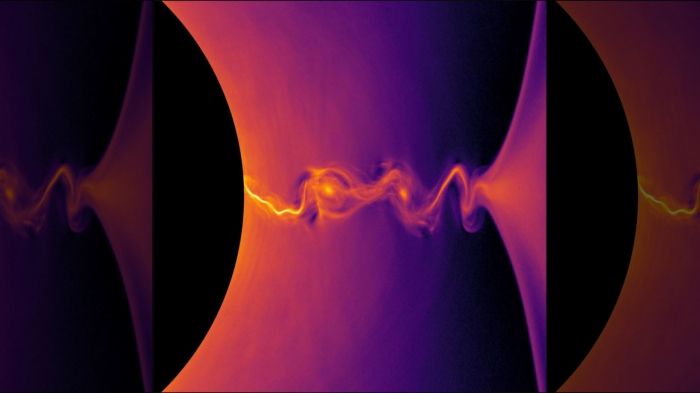Despite their moniker, black holes aren't always black. As a black hole consumes an object, gas and dust spins around the maw of the gravitational behemoth, and friction can heat the material on the edges to searing temperatures. This violent process creates lighthouse-like beams of charged particles that travel outward at near light speed, emitting radiation that can shine brighter than an entire galaxy.
"They are like laser beams piercing the universe and allowing us to see black holes whose emission would otherwise be too dim to be detectable," Alexander Tchekhovskoy, a computational astrophysicist at Northwestern University in Evanston, Illinois, told Live Science.
But the complex mechanisms behind these jets remain poorly understood. A potential insight into the problem comes from the fact that material around a black hole is transformed into plasma, a blisteringly hot, but diffuse magnetized state of matter. Physicists have long suspected that twisting magnetic fields somehow interact with the curved fabric of space-time around a spinning black hole to give rise to the jets.
Using highly detailed computer models, Kyle Parfrey of NASA's Goddard Space Flight Center in Greenbelt, Maryland, and his colleagues were able to simulate how charged particles near a black hole's edge give rise to twisting and rotating magnetic fields, as the researchers reported Jan. 23 in the journal Physical Review Letters. The scientists also incorporated information from Albert Einstein's theory of relativity to model pairs of these particles flying on special orbits. These orbits are tuned in just the right way so that if one of the particles from a duo falls into the black hole, its partner will zoom out at ultrafast speed, propelling itself using energy stolen from the black hole itself.
Any object, even a bag of trash, could be shot out of a spacecraft onto on one of these orbits, and it would give the ship a powerful boost of energy, said Tchekhovskoy, who was not involved in the work.
The new computational methods will help researchers better study regions of intense electric current near a black hole's edge, which could be related to the X-rays and gamma-rays seen in the jets, Parfrey told Live Science. Next, the team wants to more realistically model the process of generating the charged particle pairs. That will allow astronomers to make better predictions about a jet's properties, Parfrey said.
The findings will also help scientists interpret the results from two endeavors, the Event Horizon Telescope and GRAVITY, currently aiming to photograph the shadow cast on surrounding material by the supermassive black hole at the heart of the Milky Way, Parfrey said.
More about: #BlackHole
















































